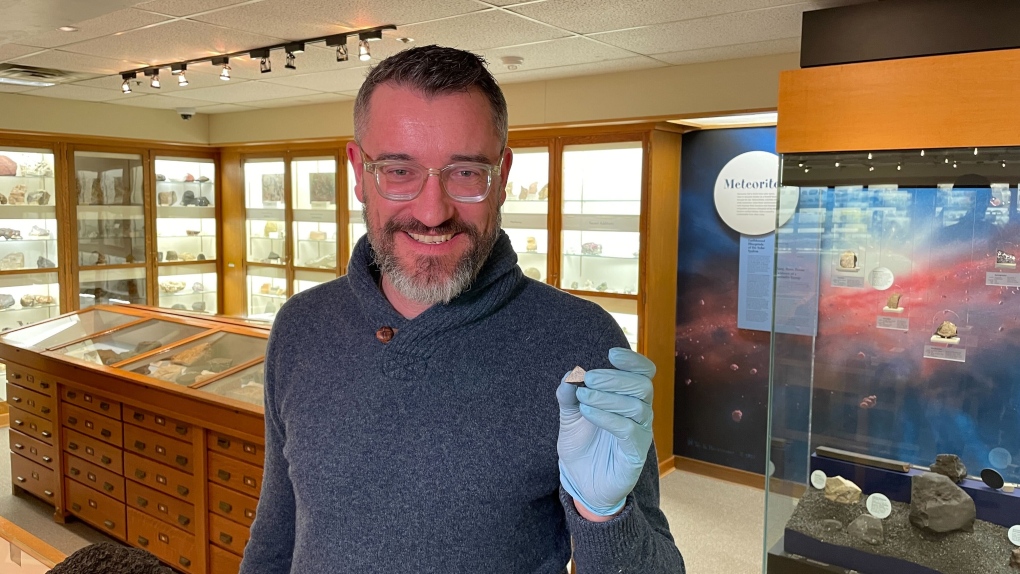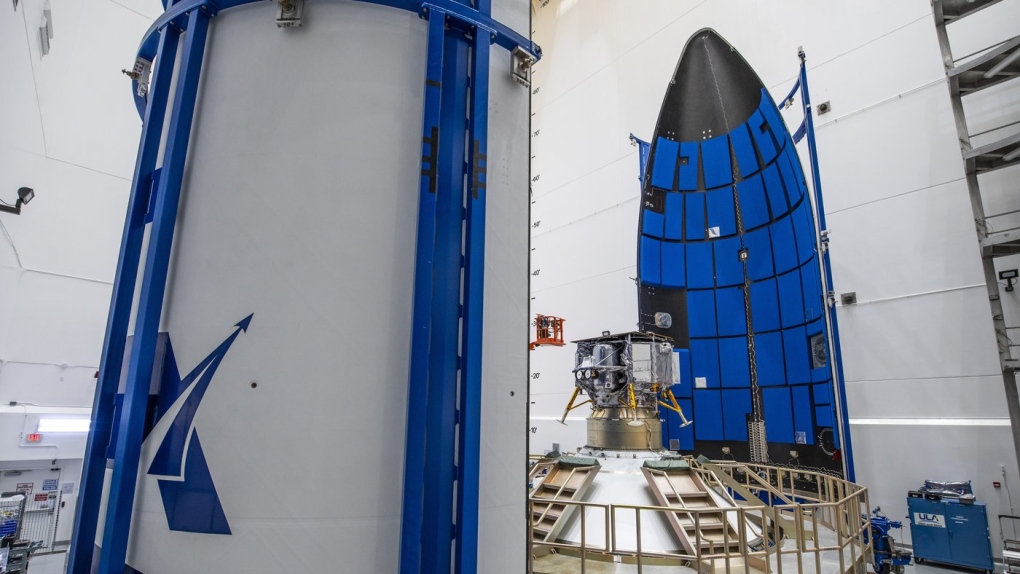Alberta’s newest meteorite spent seven months in an Edmontonian’s eavestrough.
In October 2022, Doug Olsen was folding laundry in his southeast Edmonton home when he was startled by a loud bang overhead.
“I thought, did somebody just shoot my roof?” Olsen said. “I was listening to hear something rolling off or some other noise and there was nothing.”
Olsen looked on the roof and checked the yard, but he didn’t find anything.
He stopped looking, but he didn’t stop thinking about it. In May, he decided to take another look around in May while he did a bit of spring home maintenance.
“Sure enough, the meteorite was in the eavestrough,” Olsen said.
A meteorite is a piece of rock from space, potentially as old as the solar system itself, that has survived entering earth’s atmosphere. They are normally heavier than other rocks, have a black exterior and are almost always magnetic.
While some people might not look twice at one, Olsen (who has submitted a suspected meteorite in the past for testing) had a hunch it wasn’t a regular rock.
Alberta’s newest meteorite spent seven months in an Edmontonian’s eavestrough.
In October 2022, Doug Olsen was folding laundry in his southeast Edmonton home when he was startled by a loud bang overhead.
“I thought, did somebody just shoot my roof?” Olsen said. “I was listening to hear something rolling off or some other noise and there was nothing.”
Olsen looked on the roof and checked the yard, but he didn’t find anything.
He stopped looking, but he didn’t stop thinking about it. In May, he decided to take another look around while he did a bit of spring home maintenance.
“Sure enough, the meteorite was in the eavestrough,” Olsen said.
A meteorite is a piece of rock from space, potentially as old as the solar system itself, that has survived entering earth’s atmosphere. They are normally heavier than other rocks, have a black exterior and are almost always magnetic.
While some people might not look twice at one, Olsen (who has submitted a suspected meteorite in the past for testing) had a hunch it wasn’t a regular rock.
The Menisa meteorite, recovered in May, was named after the Edmonton neighbourhood where it was found by Doug Olsen. (Sean McClune/CTV News Edmonton)
“I took it to my wife, and I says ‘I got this meteorite from the roof,’ and immediately she reaches for a magnet and sticks it on there, and it stuck on there.”
Olsen soon connected with professor and meteorite expert Chris Herd at the University of Alberta.
Herd said the university gets hundreds of emails a year about suspected space rocks and that 99.9 per cent of them are not. However, he knew immediately that this one was.
“He emailed a photo of it [and] I’m like, “That’s the real thing. That is really exciting, and let’s work on it,'” Herd said.
It’s “exceptionally rare” for a meteorite to hit a person or a building, and Olsen is one of few that have been in the right place at the right time to witness the end of the rocks long journey from space.
Before Olsen heard that bang, it had been 46 years since someone witnessed the fall of a confirmed meteorite. Before he found it, only 17 other meteorites had been recovered in the province.
“It’s travelled hundreds of millions of kilometres to get here,” Herd said. “It was probably a piece of an asteroid in the asteroid belt between Mars and Jupiter and a piece got knocked off.
“Maybe many, many times [orbited] around the sun, [and] on a particular afternoon, crosses the Earth’s orbit, falls to the ground, hits the guy’s house.
“Like it’s amazing the journey that this little rock has taken.”
The university tested and classified the meteorite as an ordinary chondrite.
Menisa, named for the neighbourhood where it was found, will remain as part of the University of Alberta’s meteorite collection.
With files from CTV London’s Gerry Dewan, and CTV News Edmoton’s Evan Kenny and Nahreman Issa.




